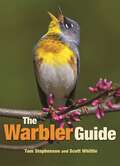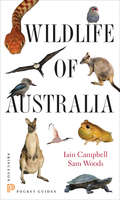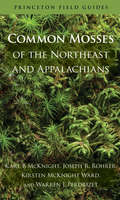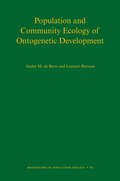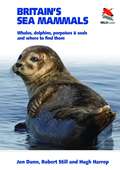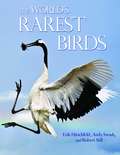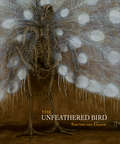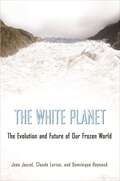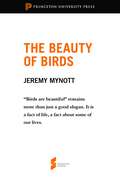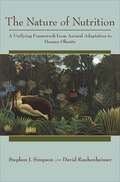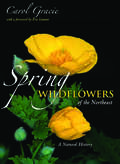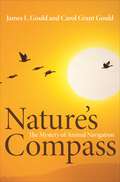- Table View
- List View
The Warbler Guide
by Tom Stephenson Scott WhittleWarblers are among the most challenging birds to identify. They exhibit an array of seasonal plumages and have distinctive yet oft-confused calls and songs. The Warbler Guide enables you to quickly identify any of the 56 species of warblers in the United States and Canada. This groundbreaking guide features more than 1,000 stunning color photos, extensive species accounts with multiple viewing angles, and an entirely new system of vocalization analysis that helps you distinguish songs and calls.The Warbler Guide revolutionizes birdwatching, making warbler identification easier than ever before. For more information, please see the author videos on the Princeton University Press website.Covers all 56 species of warblers in the United States and CanadaVisual quick finders help you identify warblers from any angleSong and call finders make identification easy using a few simple questionsUses sonograms to teach a new system of song identification that makes it easier to understand and hear differences between similar speciesDetailed species accounts show multiple views with diagnostic points, direct comparisons of plumage and vocalizations with similar species, and complete aging and sexing descriptionsNew aids to identification include song mnemonics and icons for undertail pattern, color impression, habitat, and behaviorIncludes field exercises, flight shots, general identification strategies, and quizzesA complete, page-by-page audio companion to all of the 1,000-plus songs and calls covered by the book is available for purchase and download from the Cornell Lab of Ornithology's Macaulay Library by using the link at www.TheWarblerGuide.com
The Warbler Guide
by Tom Stephenson Scott WhittleWarblers are among the most challenging birds to identify. They exhibit an array of seasonal plumages and have distinctive yet oft-confused calls and songs. The Warbler Guide enables you to quickly identify any of the 56 species of warblers in the United States and Canada. This groundbreaking guide features more than 1,000 stunning color photos, extensive species accounts with multiple viewing angles, and an entirely new system of vocalization analysis that helps you distinguish songs and calls.The Warbler Guide revolutionizes birdwatching, making warbler identification easier than ever before. For more information, please see the author videos on the Princeton University Press website.Covers all 56 species of warblers in the United States and CanadaVisual quick finders help you identify warblers from any angleSong and call finders make identification easy using a few simple questionsUses sonograms to teach a new system of song identification that makes it easier to understand and hear differences between similar speciesDetailed species accounts show multiple views with diagnostic points, direct comparisons of plumage and vocalizations with similar species, and complete aging and sexing descriptionsNew aids to identification include song mnemonics and icons for undertail pattern, color impression, habitat, and behaviorIncludes field exercises, flight shots, general identification strategies, and quizzesA complete, page-by-page audio companion to all of the 1,000-plus songs and calls covered by the book is available for purchase and download from the Cornell Lab of Ornithology's Macaulay Library by using the link at www.TheWarblerGuide.com
Wildlife of Australia
by Iain Campbell Sam WoodsIdeal for the nature-loving traveler, Wildlife of Australia is a handy photographic pocket guide to the most widely seen birds, mammals, reptiles, amphibians, and habitats of Australia. The guide features more than 400 stunning color photographs, and coverage includes 350 birds, 70 mammals, 30 reptiles, and 16 frogs likely to be encountered in Australia's major tourist destinations. Accessible species accounts are useful for both general travelers and serious naturalists, and the invaluable habitat section describes the Australian bush and its specific wildlife. Animal species with similar features are placed on the same plates in order to aid identification. Wildlife of Australia is an indispensable and thorough resource for any nature enthusiast interested in this remarkable continent. Easy-to-use pocket guide More than 400 high-quality photographs Accessible text aids identification Habitat guide describes the Australian bush and its specific wildlife Coverage includes the 350 birds, 70 mammals, 30 reptiles, and 16 frogs most likely to be seen on a trip around Australia
Ecology of Climate Change: The Importance of Biotic Interactions
by Eric PostRising temperatures are affecting organisms in all of Earth's biomes, but the complexity of ecological responses to climate change has hampered the development of a conceptually unified treatment of them. In a remarkably comprehensive synthesis, this book presents past, ongoing, and future ecological responses to climate change in the context of two simplifying hypotheses, facilitation and interference, arguing that biotic interactions may be the primary driver of ecological responses to climate change across all levels of biological organization. Eric Post's synthesis and analyses of ecological consequences of climate change extend from the Late Pleistocene to the present, and through the next century of projected warming. His investigation is grounded in classic themes of enduring interest in ecology, but developed around novel conceptual and mathematical models of observed and predicted dynamics. Using stability theory as a recurring theme, Post argues that the magnitude of climatic variability may be just as important as the magnitude and direction of change in determining whether populations, communities, and species persist. He urges a more refined consideration of species interactions, emphasizing important distinctions between lateral and vertical interactions and their disparate roles in shaping responses of populations, communities, and ecosystems to climate change.
Common Mosses of the Northeast and Appalachians (PDF)
by Karl B Mcknight Joseph R. Rohrer Kirsten Mcknight Ward Warren J. PerdrizetThis is the first book to help general readers recognize 200 common mosses of the Northeast and the Appalachian Mountains. With just this field guide, a hand lens, and a spray bottle--no microscopes necessary--readers will be able to identify and name many of the common species of mosses growing in the region's backyards, parks, forests, wetlands, and mountains. At the heart of this guide is an innovative, color-tabbed system that helps readers pick out small groups of similar species. Illustrated identification keys, colorful habitat and leaf photos, more than 600 detailed line drawings, and written descriptions help differentiate the species. This accessible book allows all nature enthusiasts to make accurate identifications and gain access to the enchanting world of mosses. 200 species included More than 600 detailed line drawings More than 400 color photographs Innovative color-tabbed system for species identification Illustrated species identification keys Helpful tips for moss collecting
Perfect Order: Recognizing Complexity in Bali
by J. Stephen LansingAlong rivers in Bali, small groups of farmers meet regularly in water temples to manage their irrigation systems. They have done so for a thousand years. Over the centuries, water temple networks have expanded to manage the ecology of rice terraces at the scale of whole watersheds. Although each group focuses on its own problems, a global solution nonetheless emerges that optimizes irrigation flows for everyone. Did someone have to design Bali's water temple networks, or could they have emerged from a self-organizing process? Perfect Order--a groundbreaking work at the nexus of conservation, complexity theory, and anthropology--describes a series of fieldwork projects triggered by this question, ranging from the archaeology of the water temples to their ecological functions and their place in Balinese cosmology. Stephen Lansing shows that the temple networks are fragile, vulnerable to the cross-currents produced by competition among male descent groups. But the feminine rites of water temples mirror the farmers' awareness that when they act in unison, small miracles of order occur regularly, as the jewel-like perfection of the rice terraces produces general prosperity. Much of this is barely visible from within the horizons of Western social theory. The fruit of a decade of multidisciplinary research, this absorbing book shows that even as researchers probe the foundations of cooperation in the water temple networks, the very existence of the traditional farming techniques they represent is threatened by large-scale development projects.
Perfect Order: Recognizing Complexity in Bali
by J. Stephen LansingAlong rivers in Bali, small groups of farmers meet regularly in water temples to manage their irrigation systems. They have done so for a thousand years. Over the centuries, water temple networks have expanded to manage the ecology of rice terraces at the scale of whole watersheds. Although each group focuses on its own problems, a global solution nonetheless emerges that optimizes irrigation flows for everyone. Did someone have to design Bali's water temple networks, or could they have emerged from a self-organizing process? Perfect Order--a groundbreaking work at the nexus of conservation, complexity theory, and anthropology--describes a series of fieldwork projects triggered by this question, ranging from the archaeology of the water temples to their ecological functions and their place in Balinese cosmology. Stephen Lansing shows that the temple networks are fragile, vulnerable to the cross-currents produced by competition among male descent groups. But the feminine rites of water temples mirror the farmers' awareness that when they act in unison, small miracles of order occur regularly, as the jewel-like perfection of the rice terraces produces general prosperity. Much of this is barely visible from within the horizons of Western social theory. The fruit of a decade of multidisciplinary research, this absorbing book shows that even as researchers probe the foundations of cooperation in the water temple networks, the very existence of the traditional farming techniques they represent is threatened by large-scale development projects.
Population and Community Ecology of Ontogenetic Development
by André M. de Roos Lennart PerssonMost organisms show substantial changes in size or morphology after they become independent of their parents and have to find their own food. Furthermore, the rate at which these changes occur generally depends on the amount of food they ingest. In this book, André de Roos and Lennart Persson advance a synthetic and individual-based theory of the effects of this plastic ontogenetic development on the dynamics of populations and communities. De Roos and Persson show how the effects of ontogenetic development on ecological dynamics critically depend on the efficiency with which differently sized individuals convert food into new biomass. Differences in this efficiency--or ontogenetic asymmetry--lead to bottlenecks in and thus population regulation by either maturation or reproduction. De Roos and Persson investigate the community consequences of these bottlenecks for trophic configurations that vary in the number and type of interacting species and in the degree of ontogenetic niche shifts exhibited by their individuals. They also demonstrate how insights into the effects of maturation and reproduction limitation on community equilibrium carry over to the dynamics of size-structured populations and give rise to different types of cohort-driven cycles. Featuring numerous examples and tests of modeling predictions, this book provides a pioneering and extensive theoretical and empirical treatment of the ecology of ontogenetic growth and development in organisms, emphasizing the importance of an individual-based perspective for understanding population and community dynamics.
Pricing the Planet's Future: The Economics of Discounting in an Uncertain World
by Christian GollierOur path of economic development has generated a growing list of environmental problems including the disposal of nuclear waste, exhaustion of natural resources, loss of biodiversity, climate change, and polluted land, air, and water. All these environmental problems raise the crucial challenge of determining what we should and should not do for future generations. It is also central to other policy debates, including, for example, the appropriate level of public debt, investment in public infrastructure, investment in education, and the level of funding for pension benefits and for research and development. Today, the judge, the citizen, the politician, and the entrepreneur are concerned with the sustainability of our development. The objective of Pricing the Planet's Future is to provide a simple framework to organize the debate on what we should do for the future. A key element of analysis by economists is the discount rate--the minimum rate of return required from an investment project to make it desirable to implement. Christian Gollier outlines the basic theory of the discount rate and the various arguments that favor using a smaller discount rate for more distant cash flows. With principles that can be applied to many policy areas, Pricing the Planet's Future offers an ideal framework for dynamic problems and decision making.
Pricing the Planet's Future: The Economics of Discounting in an Uncertain World
by Christian GollierOur path of economic development has generated a growing list of environmental problems including the disposal of nuclear waste, exhaustion of natural resources, loss of biodiversity, climate change, and polluted land, air, and water. All these environmental problems raise the crucial challenge of determining what we should and should not do for future generations. It is also central to other policy debates, including, for example, the appropriate level of public debt, investment in public infrastructure, investment in education, and the level of funding for pension benefits and for research and development. Today, the judge, the citizen, the politician, and the entrepreneur are concerned with the sustainability of our development. The objective of Pricing the Planet's Future is to provide a simple framework to organize the debate on what we should do for the future. A key element of analysis by economists is the discount rate--the minimum rate of return required from an investment project to make it desirable to implement. Christian Gollier outlines the basic theory of the discount rate and the various arguments that favor using a smaller discount rate for more distant cash flows. With principles that can be applied to many policy areas, Pricing the Planet's Future offers an ideal framework for dynamic problems and decision making.
Britain's Sea Mammals: Whales, Dolphins, Porpoises, and Seals and Where to Find Them (PDF)
by Jon Dunn Robert Still Hugh HarropBritain's Sea Mammals is the essential field guide to all the sea mammals--whales, dolphins, porpoises, and seals--found in coastal Britain. The book features more than 100 stunning photographs and close to 40 detailed and beautiful illustrations of 34 species of sea mammals, paying special attention to the 14 species most readily seen and most likely to be encountered. Factoring in behavior and locations, introductory chapters look at sea mammal biology and ecology, and how, when, and where these creatures can be spotted. Species accounts highlight key identification characteristics and include information on status, habitat requirements, and distribution. Handy and informative, Britain's Sea Mammals is the ideal guide to sea mammal watching in the United Kingdom. The only guide that focuses on the 34 species of sea mammal recorded in Britain, particularly the 14 most readily seen species More than 100 photos and almost 40 illustrations highlight species, their behavior, and locations Introductory chapters explore how, when, and where to look for sea mammals Species accounts highlight key identification features, including information on status, habitat requirements, and distribution
The World's Rarest Birds
by Erik Hirschfeld Andy Swash Robert StillThis illustrated book vividly depicts the most endangered birds in the world and provides the latest information on the threats each species faces and the measures being taken to save them. Today, 571 bird species are classified as critically endangered or endangered, and a further four now exist only in captivity. This landmark book features stunning photographs of 500 of these species--the results of a prestigious international photographic competition organized specifically for this book. It also showcases paintings by acclaimed wildlife artist Tomasz Cofta of the 75 species for which no photos are known to exist. The World's Rarest Birds has introductory chapters that explain the threats to birds, the ways threat categories are applied, and the distinction between threat and rarity. The book is divided into seven regional sections--Europe and the Middle East; Africa and Madagascar; Asia; Australasia; Oceanic Islands; North America, Central America, and the Caribbean; and South America. Each section includes an illustrated directory to the bird species under threat there, and gives a concise description of distribution, status, population, key threats, and conservation needs. This one-of-a-kind book also provides coverage of 62 data-deficient species.
The Unfeathered Bird
by Katrina Van GrouwThere is more to a bird than simply feathers. And just because birds evolved from a single flying ancestor doesn't mean they are structurally all the same. With over 385 stunning drawings depicting 200 species, The Unfeathered Bird is a richly illustrated book on bird anatomy that offers refreshingly original insights into what goes on beneath the feathered surface. Each exquisite drawing is made from an actual specimen and reproduced in sumptuous large format. The birds are shown in lifelike positions and engaged in behavior typical of the species: an underwater view of the skeleton of a swimming loon, the musculature of a porpoising penguin, and an unfeathered sparrowhawk plucking its prey. Jargon-free and easily accessible to any reader, the lively text relates birds' anatomy to their lifestyle and evolution, examining such questions as why penguins are bigger than auks, whether harrier hawks really have double-jointed legs, and the difference between wing claws and wing spurs. A landmark in popular bird books, The Unfeathered Bird is a must for anyone who appreciates birds or bird art. A unique book that bridges art, science, and history Over 385 beautiful drawings, artistically arranged in a sumptuous large-format book Accessible, jargon-free text--the only book on bird anatomy aimed at the general reader Drawings and text all based on actual bird specimens Includes most anatomically distinct bird groups Many species never illustrated before
The White Planet: The Evolution and Future of Our Frozen World
by Jean Jouzel Claude Lorius Dominique Raynaud Teresa Lavender FaganFrom the Arctic Ocean and ice sheets of Greenland, to the glaciers of the Andes and Himalayas, to the great frozen desert of Antarctica, The White Planet takes readers on a spellbinding scientific journey through the shrinking world of ice and snow to tell the story of the expeditions and discoveries that have transformed our understanding of global climate. Written by three internationally renowned scientists at the center of many breakthroughs in ice core and climate science, this book provides an unparalleled firsthand account of how the "white planet" affects global climate--and how, in turn, global warming is changing the frozen world. Jean Jouzel, Claude Lorius, and Dominique Raynaud chronicle the daunting scientific, technical, and human hurdles that they and other scientists have had to overcome in order to unravel the mysteries of past and present climate change, as revealed by the cryosphere--the dynamic frozen regions of our planet. Scientifically impeccable, up-to-date, and accessible, The White Planet brings cutting-edge climate research to general readers through a vivid narrative. This is an essential book for anyone who wants to understand the inextricable link between climate and our planet's icy regions.
The White Planet: The Evolution and Future of Our Frozen World
by Jean Jouzel Claude Lorius Dominique Raynaud Teresa Lavender FaganFrom the Arctic Ocean and ice sheets of Greenland, to the glaciers of the Andes and Himalayas, to the great frozen desert of Antarctica, The White Planet takes readers on a spellbinding scientific journey through the shrinking world of ice and snow to tell the story of the expeditions and discoveries that have transformed our understanding of global climate. Written by three internationally renowned scientists at the center of many breakthroughs in ice core and climate science, this book provides an unparalleled firsthand account of how the "white planet" affects global climate--and how, in turn, global warming is changing the frozen world. Jean Jouzel, Claude Lorius, and Dominique Raynaud chronicle the daunting scientific, technical, and human hurdles that they and other scientists have had to overcome in order to unravel the mysteries of past and present climate change, as revealed by the cryosphere--the dynamic frozen regions of our planet. Scientifically impeccable, up-to-date, and accessible, The White Planet brings cutting-edge climate research to general readers through a vivid narrative. This is an essential book for anyone who wants to understand the inextricable link between climate and our planet's icy regions.
The Beauty of Birds: Birds in Our Imagination and Experience"
by Jeremy MynottSpring returns and with it the birds. But it also brings throngs of birders who emerge, binoculars in hand, to catch a glimpse of a rare or previously unseen species or to simply lay eyes on a particularly fine specimen of a familiar type. In a delightful meditation that unexpectedly ranges from the Volga Delta to Central Park and from Charles Dickens's Hard Times to a 1940s London burlesque show, Jeremy Mynott ponders what makes birds so beautiful and alluring to so many people. Princeton Shorts are brief selections taken from influential Princeton University Press books and produced exclusively in ebook format. Providing unmatched insight into important contemporary issues or timeless passages from classic works of the past, Princeton Shorts enable you to be an instant expert in a world where information is everywhere but quality is at a premium.
The Beauty of Birds: Birds in Our Imagination and Experience"
by Jeremy MynottSpring returns and with it the birds. But it also brings throngs of birders who emerge, binoculars in hand, to catch a glimpse of a rare or previously unseen species or to simply lay eyes on a particularly fine specimen of a familiar type. In a delightful meditation that unexpectedly ranges from the Volga Delta to Central Park and from Charles Dickens's Hard Times to a 1940s London burlesque show, Jeremy Mynott ponders what makes birds so beautiful and alluring to so many people. Princeton Shorts are brief selections taken from influential Princeton University Press books and produced exclusively in ebook format. Providing unmatched insight into important contemporary issues or timeless passages from classic works of the past, Princeton Shorts enable you to be an instant expert in a world where information is everywhere but quality is at a premium.
The Nature of Nutrition: A Unifying Framework from Animal Adaptation to Human Obesity
by Stephen J. Simpson David RaubenheimerNutrition has long been considered more the domain of medicine and agriculture than of the biological sciences, yet it touches and shapes all aspects of the natural world. The need for nutrients determines whether wild animals thrive, how populations evolve and decline, and how ecological communities are structured. The Nature of Nutrition is the first book to address nutrition's enormously complex role in biology, both at the level of individual organisms and in their broader ecological interactions. Stephen Simpson and David Raubenheimer provide a comprehensive theoretical approach to the analysis of nutrition--the Geometric Framework. They show how it can help us to understand the links between nutrition and the biology of individual animals, including the physiological mechanisms that determine the nutritional interactions of the animal with its environment, and the consequences of these interactions in terms of health, immune responses, and lifespan. Simpson and Raubenheimer explain how these effects translate into the collective behavior of groups and societies, and in turn influence food webs and the structure of ecosystems. Then they demonstrate how the Geometric Framework can be used to tackle issues in applied nutrition, such as the problem of optimizing diets for livestock and endangered species, and how it can also help to address the epidemic of human obesity and metabolic disease. Drawing on a wealth of examples from slime molds to humans, The Nature of Nutrition has important applications in ecology, evolution, and physiology, and offers promising solutions for human health, conservation, and agriculture.
The Nature of Nutrition: A Unifying Framework from Animal Adaptation to Human Obesity
by Stephen J. Simpson David RaubenheimerNutrition has long been considered more the domain of medicine and agriculture than of the biological sciences, yet it touches and shapes all aspects of the natural world. The need for nutrients determines whether wild animals thrive, how populations evolve and decline, and how ecological communities are structured. The Nature of Nutrition is the first book to address nutrition's enormously complex role in biology, both at the level of individual organisms and in their broader ecological interactions. Stephen Simpson and David Raubenheimer provide a comprehensive theoretical approach to the analysis of nutrition--the Geometric Framework. They show how it can help us to understand the links between nutrition and the biology of individual animals, including the physiological mechanisms that determine the nutritional interactions of the animal with its environment, and the consequences of these interactions in terms of health, immune responses, and lifespan. Simpson and Raubenheimer explain how these effects translate into the collective behavior of groups and societies, and in turn influence food webs and the structure of ecosystems. Then they demonstrate how the Geometric Framework can be used to tackle issues in applied nutrition, such as the problem of optimizing diets for livestock and endangered species, and how it can also help to address the epidemic of human obesity and metabolic disease. Drawing on a wealth of examples from slime molds to humans, The Nature of Nutrition has important applications in ecology, evolution, and physiology, and offers promising solutions for human health, conservation, and agriculture.
Physiological Adaptations for Breeding in Birds
by Tony D. WilliamsPhysiological Adaptations for Breeding in Birds is the most current and comprehensive account of research on avian reproduction. It develops two unique themes: the consideration of female avian reproductive physiology and ecology, and an emphasis on individual variation in life-history traits. Tony Williams investigates the physiological, metabolic, energetic, and hormonal mechanisms that underpin individual variation in the key female-specific reproductive traits and the trade-offs between these traits that determine variation in fitness. The core of the book deals with the avian reproductive cycle, from seasonal gonadal development, through egg laying and incubation, to chick rearing. Reproduction is considered in the context of the annual cycle and through an individual's entire life history. The book focuses on timing of breeding, clutch size, egg size and egg quality, and parental care. It also provides a primer on female reproductive physiology and considers trade-offs and carryover effects between reproduction and other life-history stages. In each chapter, Williams describes individual variation in the trait of interest and the evolutionary context for trait variation. He argues that there is only a rudimentary, and in some cases nonexistent, understanding of the physiological mechanisms that underpin individual variation in the major reproductive life-history traits, and that research efforts should refocus on these key unresolved problems by incorporating detailed physiological studies into existing long-term population studies, generating a new synthesis of physiology, ecology, and evolutionary biology.
Physiological Adaptations for Breeding in Birds
by Tony D. WilliamsPhysiological Adaptations for Breeding in Birds is the most current and comprehensive account of research on avian reproduction. It develops two unique themes: the consideration of female avian reproductive physiology and ecology, and an emphasis on individual variation in life-history traits. Tony Williams investigates the physiological, metabolic, energetic, and hormonal mechanisms that underpin individual variation in the key female-specific reproductive traits and the trade-offs between these traits that determine variation in fitness. The core of the book deals with the avian reproductive cycle, from seasonal gonadal development, through egg laying and incubation, to chick rearing. Reproduction is considered in the context of the annual cycle and through an individual's entire life history. The book focuses on timing of breeding, clutch size, egg size and egg quality, and parental care. It also provides a primer on female reproductive physiology and considers trade-offs and carryover effects between reproduction and other life-history stages. In each chapter, Williams describes individual variation in the trait of interest and the evolutionary context for trait variation. He argues that there is only a rudimentary, and in some cases nonexistent, understanding of the physiological mechanisms that underpin individual variation in the major reproductive life-history traits, and that research efforts should refocus on these key unresolved problems by incorporating detailed physiological studies into existing long-term population studies, generating a new synthesis of physiology, ecology, and evolutionary biology.
The Politics of Precaution: Regulating Health, Safety, and Environmental Risks in Europe and the United States
by David VogelThe Politics of Precaution examines the politics of consumer and environmental risk regulation in the United States and Europe over the last five decades, explaining why America and Europe have often regulated a wide range of similar risks differently. It finds that between 1960 and 1990, American health, safety, and environmental regulations were more stringent, risk averse, comprehensive, and innovative than those adopted in Europe. But since around 1990, the book shows, global regulatory leadership has shifted to Europe. What explains this striking reversal? David Vogel takes an in-depth, comparative look at European and American policies toward a range of consumer and environmental risks, including vehicle air pollution, ozone depletion, climate change, beef and milk hormones, genetically modified agriculture, antibiotics in animal feed, pesticides, cosmetic safety, and hazardous substances in electronic products. He traces how concerns over such risks--and pressure on political leaders to do something about them--have risen among the European public but declined among Americans. Vogel explores how policymakers in Europe have grown supportive of more stringent regulations while those in the United States have become sharply polarized along partisan lines. And as European policymakers have grown more willing to regulate risks on precautionary grounds, increasingly skeptical American policymakers have called for higher levels of scientific certainty before imposing additional regulatory controls on business.
The Politics of Precaution: Regulating Health, Safety, and Environmental Risks in Europe and the United States
by David VogelThe Politics of Precaution examines the politics of consumer and environmental risk regulation in the United States and Europe over the last five decades, explaining why America and Europe have often regulated a wide range of similar risks differently. It finds that between 1960 and 1990, American health, safety, and environmental regulations were more stringent, risk averse, comprehensive, and innovative than those adopted in Europe. But since around 1990, the book shows, global regulatory leadership has shifted to Europe. What explains this striking reversal? David Vogel takes an in-depth, comparative look at European and American policies toward a range of consumer and environmental risks, including vehicle air pollution, ozone depletion, climate change, beef and milk hormones, genetically modified agriculture, antibiotics in animal feed, pesticides, cosmetic safety, and hazardous substances in electronic products. He traces how concerns over such risks--and pressure on political leaders to do something about them--have risen among the European public but declined among Americans. Vogel explores how policymakers in Europe have grown supportive of more stringent regulations while those in the United States have become sharply polarized along partisan lines. And as European policymakers have grown more willing to regulate risks on precautionary grounds, increasingly skeptical American policymakers have called for higher levels of scientific certainty before imposing additional regulatory controls on business.
Spring Wildflowers of the Northeast: A Natural History
by Carol Gracie Eric LamontThis exquisitely illustrated volume provides an in-depth look at spring-blooming wildflowers of the Northeast, from old favorites to lesser-known species. Featuring more than 500 full-color photos in a stunning large-sized format, the book delves deep into the life histories, lore, and cultural uses of more than 35 plant species. The rich narrative covers topics such as the naming of wildflowers; the reasons for taxonomic changes; pollination of flowers and dispersal of seeds; uses by Native Americans; related species in other parts of the world; herbivores, plant pathogens, and pests; medicinal uses; and wildflower references in history, literature, and art. The photos capture the beauty of these plants and also illustrate the concepts discussed in the text. A book unlike any other, Spring Wildflowers of the Northeast combines the latest scientific research with an accessible, entertaining style, making it the ideal volume for readers of all levels of expertise. Showcases the Northeast's most spectacular spring-blooming wildflowers Features more than 500 full-color photos Covers the life histories, lore, and cultural uses of more than 35 species Combines the latest scientific research with an easy-to-read style Offers something new for seasoned botanists as well as armchair naturalists
Nature's Compass: The Mystery of Animal Navigation
by James L. Gould Carol Grant GouldWe know that animals cross miles of water, land, and sky with pinpoint precision on a daily basis. But it is only in recent years that scientists have learned how these astounding feats of navigation are actually accomplished. With colorful and thorough detail, Nature's Compass explores the remarkable methods by which animals find their way both near home and around the globe. Noted biologist James Gould and popular science writer Carol Gould delve into the elegant strategies and fail-safe backup systems, the invisible sensitivities and mysterious forces, and incredible mental abilities used by familiar and rare species, as they investigate a multitude of navigation strategies, from the simple to the astonishing. The Goulds discuss how animals navigate, without instruments and training, at a level far beyond human talents. They explain how animals measure time and show how the fragile monarch butterfly employs an internal clock, calendar, compass, and map to commence and measure the two-thousand-mile annual journey to Mexico--all with a brain that weighs only a few thousandths of an ounce. They look at honey bees and how they rely on the sun and mental maps to locate landmarks such as nests and flowers. And they examine whether long-distance migrants, such as the homing pigeon, depend on a global positioning system to let them know where they are. Ultimately, the authors ask if the disruption of migratory paths through habitat destruction and global warming is affecting and endangering animal species. Providing a comprehensive picture of animal navigation and migration, Nature's Compass decodes the mysteries of this extraordinary aspect of natural behavior.
